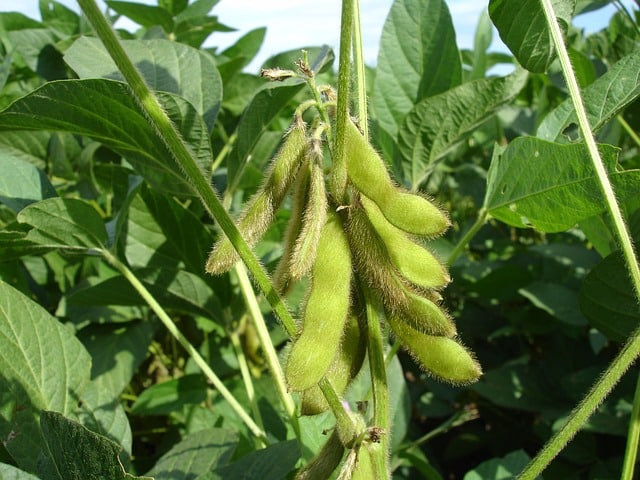The decline is driven by a strong dollar, slowing global economic growth and uncertainty around U.S. trade policies.
As the U.S. enters the 2024/25 soybean marketing year Sept. 1, export sales of new-crop soybeans are at historic lows. However, several factors may potentially revitalize demand for U.S. soybeans in the coming marketing year.
A recent research brief from CoBank’s Knowledge Exchange highlights that early season soybean export sales typically show a low correlation with final export figures for the marketing year. With a record U.S. soybean harvest expected this fall, the continued low prices could stimulate new export demand.
“The U.S. soybean export program faces a number of obstacles in the weeks and months ahead, particularly with flagging demand from China,” said Tanner Ehmke, lead grain and oilseed economist for CoBank. “But a slow start to the export sales pace does not necessarily mean it will be bad year for U.S. soybean exports. We see the potential for several developments that could bolster exports later in the year.”
The primary shipping period for U.S. soybeans spans from September to December, with over half of all seasonal shipments typically occurring before the South American harvest.
China, a major buyer of U.S. soybeans, has significantly reduced its new-crop purchases, following record imports from Brazil. This reduction has resulted in some of the lowest levels of Chinese bookings for U.S. soybeans in two decades. The hesitation is not exclusive to China; overall U.S. new-crop export sales are the lowest since 2008, with the exception of the 2019 trade war period.
Ehmke identified four key factors that could potentially boost soybean exports. These include a smaller-than-expected South American soybean harvest, increased European demand for soybeans from non-deforested land, declining interest rates in the U.S., and a recovery in the Chinese economy, all of which could drive up demand for U.S. soybeans in the coming year.
The U.S. Department of Agriculture is currently forecasting a record Brazilian soybean crop of 169 MMT. However, low prices might discourage Brazilian farmers from expanding soybean acreage as planting season begins. Additionally, La Niña, expected to emerge in September, could negatively impact Brazilian soybean yields.
New European demand for U.S. soybeans is anticipated as regulations concerning imports and deforestation take effect. Starting Dec. 30, new imports into the EU must be certified as coming from land that has not been deforested in the past decade, giving U.S. soybeans an edge over South American soybeans in the European market.
A potential economic recovery in China could also accelerate soybean purchases. The Chinese government is likely to lower interest rates aggressively to stimulate the country’s faltering economy. An economic boost that increases consumer demand for meat in China could, in turn, raise demand for soybeans and soybean meal.
Lastly, interest rate cuts by the Federal Reserve could drive capital back into emerging markets like Brazil, strengthening the Brazilian real against the U.S. dollar. A stronger Brazilian currency compared to the U.S. dollar would make U.S. soybeans more competitive in the global export market.
For more detailed insights, read the research brief, U.S. Soybean Export Sales Down, but Not Out.











